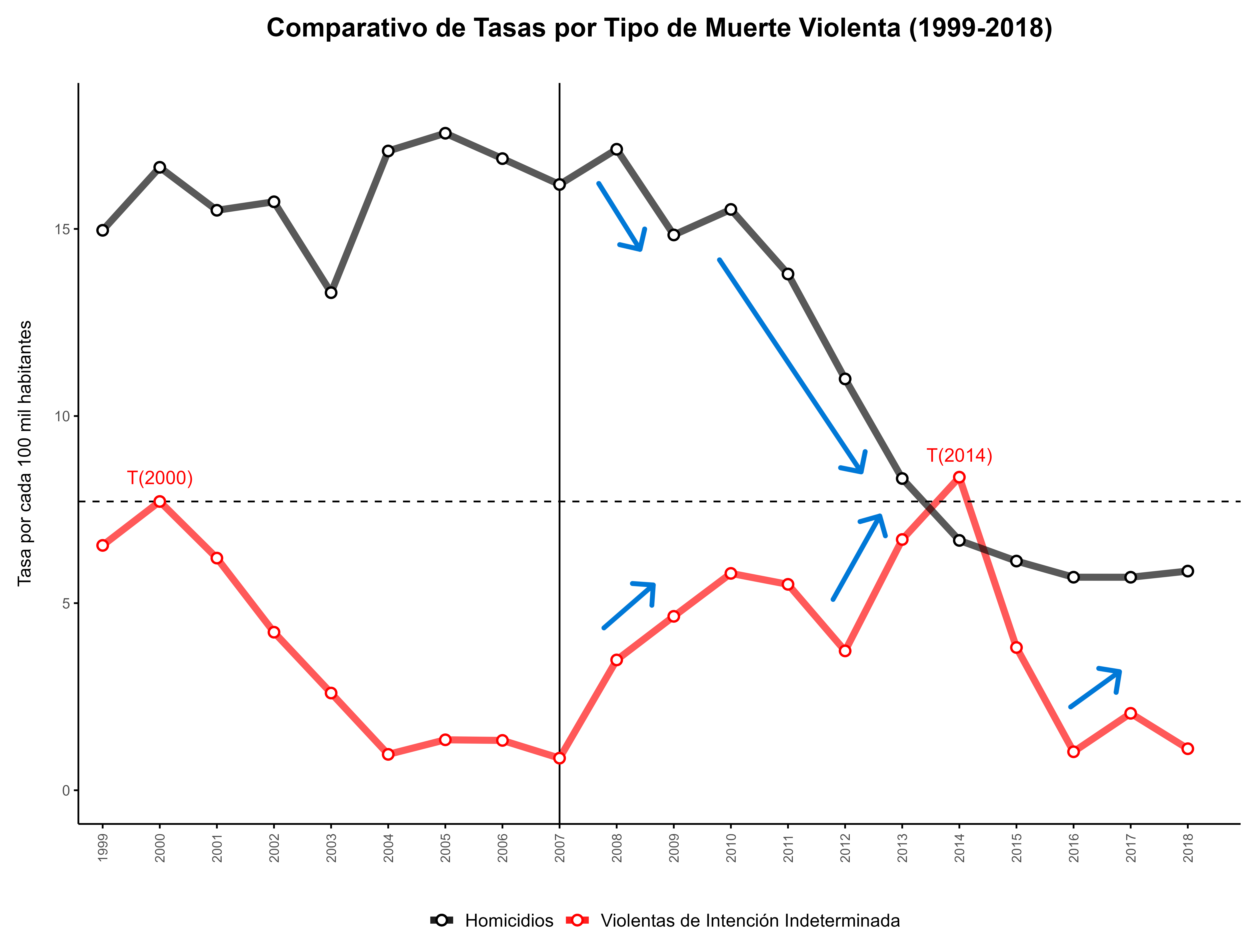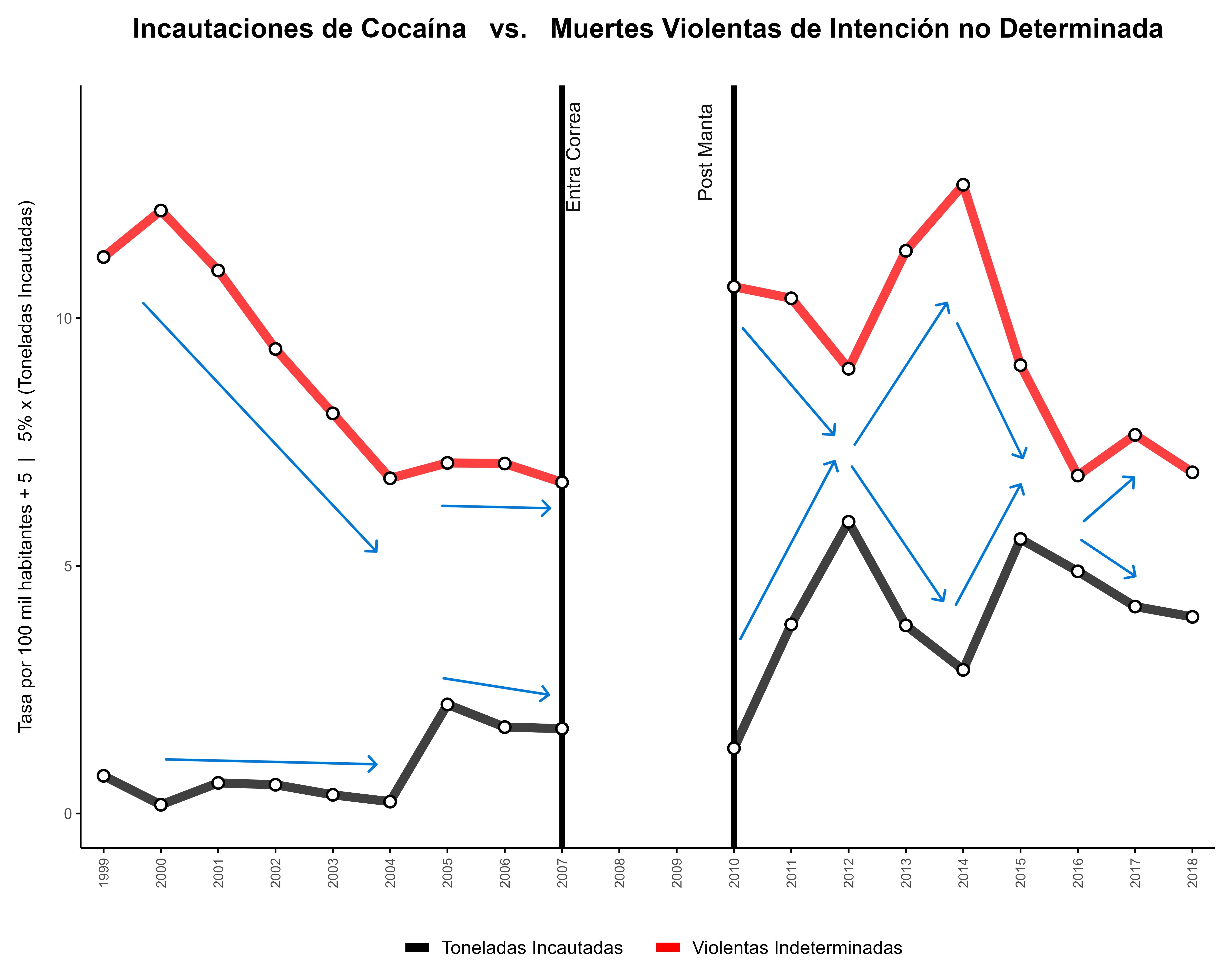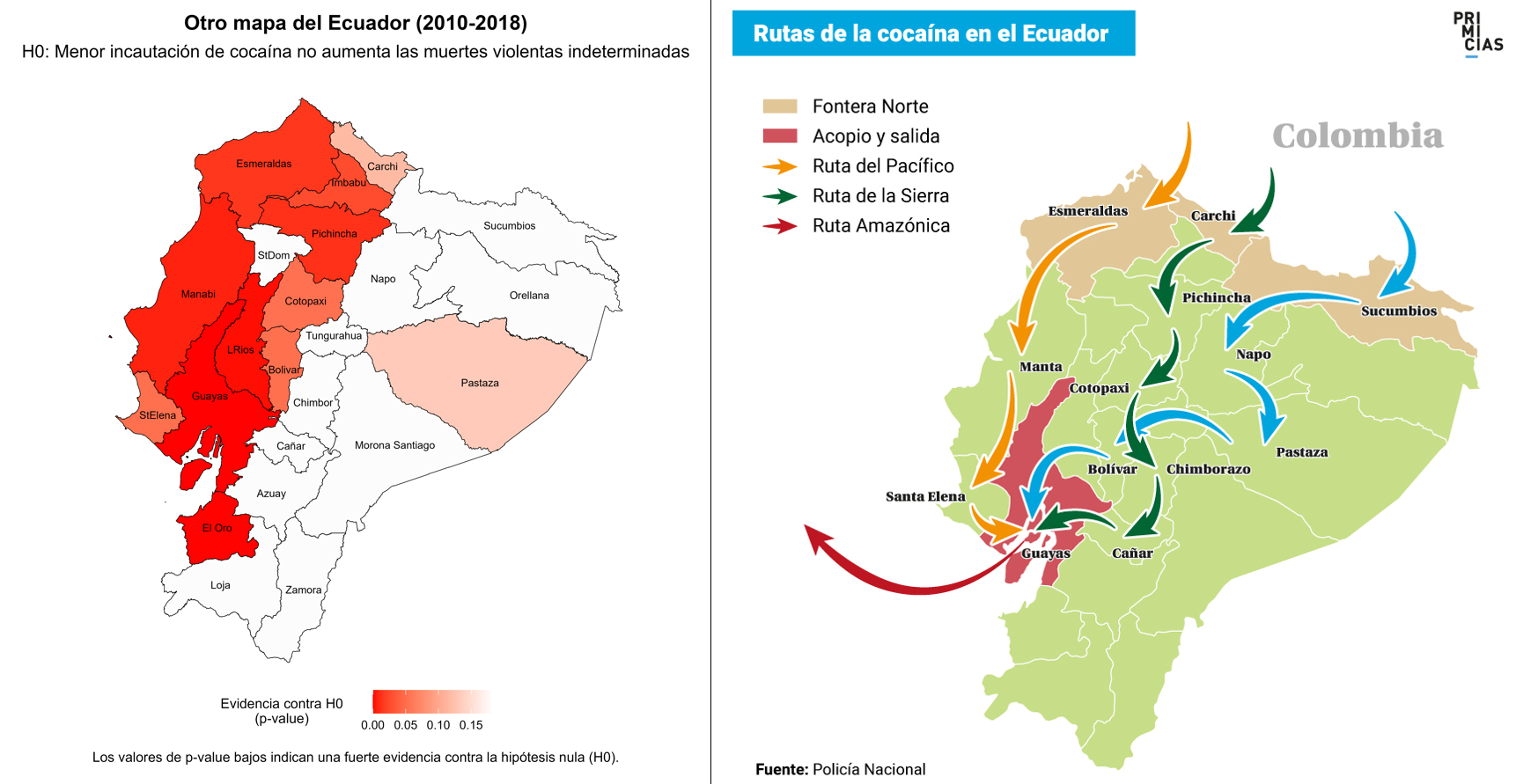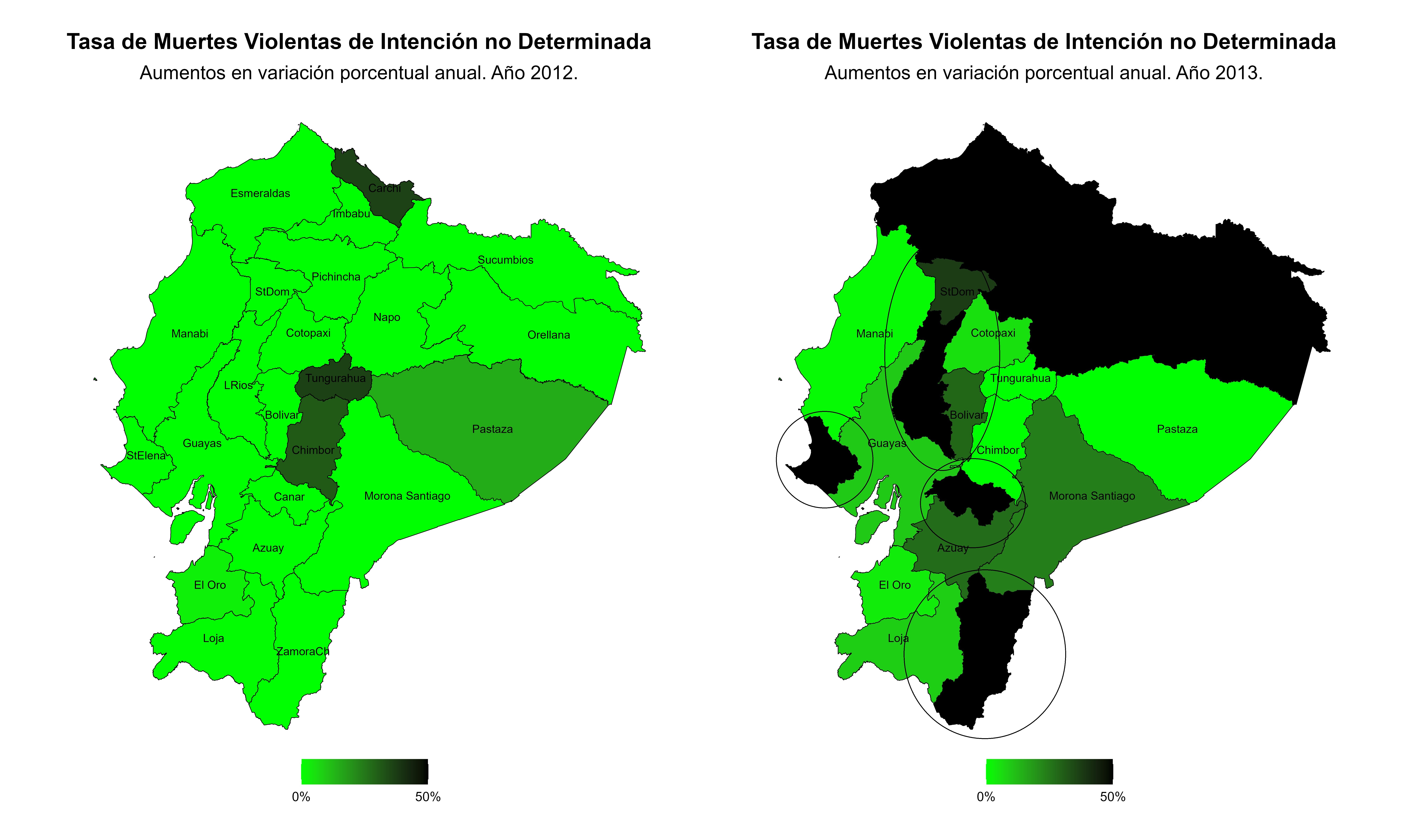Beneath the Surface: The Statistical Case for a “Pax Narca” in Ecuador
Published:
In this inaugural article using @elonmusk's @X new feature, I aim to bring greater attention to troubling evidence from my preliminary research, initially written in Spanish, that suggests Ecuador may have experienced a so-called "Pax Narca" from 2010 to 2018. The term "Pax Narca" refers to a period of superficial stability and decreased violence, likely stemming from a corrupt bargain between the government and drug cartels. My analysis indicates this disturbing era began shortly after the U.S. military withdrew from the Manta Air Base in September 2009, coinciding with the presidency of Rafael Correa. The statistical patterns point to a possible government cover-up of cartel-related violence during this time. While further investigation is urgently needed to confirm these findings, the data consistently suggests a previously hidden crisis with grave implications for human rights and the rule of law in Ecuador.
1. The rise of violent deaths of undetermined intent: During Rafael Correa's presidency (2007-2017), while the reported homicide rate decreased, the rate of violent deaths classified as "of undetermined intent" reached unprecedented levels not seen since at least 1999. These deaths, which include cases where the available information is insufficient to distinguish between accidents, suicides, and homicides, suggest a pattern of underreporting that could be obscuring a more disturbing reality: a possible government effort to cover up an increase in cocaine-trafficking related homicides.

Note. Homicide rates (black) and the rate of deaths of undetermined intent (red).
2. Possible link to drug-trafficking and the closure of the Manta Base: The stark divergence between falling homicide rates and surging violent deaths of undetermined intent during Correa's presidency, I thought, was unlikely to be mere chance. Ecuador's proximity to Colombia and presence of drug cartels suggested a link to cocaine seizure trends. Manuel González's research reinforced this, revealing a structural break in 2010 after the Manta base closure, with cocaine seizures dropping 75% on average. This sharp decline pointed to weakened counter-narcotics efforts potentially emboldening traffickers, with deadly consequences.
3. Correlation between both variables: An intriguing correlation appeared to exist between changes in cocaine seizure rates and violent deaths of undetermined intent in Ecuador from 2010-2018, immediately following the closure of the Manta Air Base in 2009. The data revealed a pattern consistent with the hypothesis that decreases in drug seizures indicate a lack of anti-narcotics enforcement: when cocaine seizures decreased, the rates of violent deaths of undetermined intent increased, and vice versa. Importantly, this relationship was not observed in the previous period from 1999-2007, which strengthens the hypothesis that there was a link between drug trafficking and this type of death after the base's closure.

Note. Cocaine seizures (black) and the rate of deaths of undetermined intent (red).
4. The correlation at the provincial level: To address the possible spurious nature of the correlation due to the limited national data, I conducted the analysis at the provincial scale. My premise was that the previous estimates should be more forceful in areas where drug trafficking is more intense. That is precisely what I found after creating a heat map of the statistical significance level of this correlation. Moreover, I found that this heat map notably coincides with the cocaine routes recently revealed by police intelligence, providing a "triangulation" from a reliable and independent external source.

Note. Right panel, strength of the correlation at the provincial level. Left panel, cocaine routes identified by Ecuadorian police intelligence.
5. From correlation to causal identification: Applying a Difference-in-Differences (DiD) framework, comparing provinces highly exposed to drug trafficking (Treatment) versus those with low exposure (Control), I obtained that after the closure of the Manta base in 2009, the treated provinces experienced a 75.48% increase in the rates of violent deaths of undetermined intent in 2010, controlling for pre-existing differences, provincial changes and common trends. This effect reverses over time, suggesting the opening of new drug trafficking routes in the Amazon.

Note. Estimated effect of the Manta Base closure on the rate of undetermined violent deaths, based on a Difference-in-Differences model. Statistically significant coefficients are marked in blue.
Additionally, I conducted a series of tests to verify the key assumptions of the DiD estimator (parallel trends), as well as another battery of tests, such as falsification by randomly assigning a placebo treatment.
6. Geographic and Temporal Patterns: But perhaps the most compelling evidence for the possible concealment of narcotics-related homicides lies in the geographical and temporal concentration of violent deaths of undetermined intent. These deaths cluster in specific provinces and years, coinciding with drops in cocaine seizures - a pattern that is difficult to attribute to chance or accidents alone.
For example, note the contrast between the annual variations in 2009 (before the base's departure) versus 2010 (after the departure).

Note. Annual percentage increase in the rate of violent deaths of undetermined intent. Left, 2009. Right, 2010.
Or the contrast between 2012 and 2013, year when seizures abruptly fall again.

Note. Annual percentage increase in the rate of violent deaths of undetermined intent. Left, 2012. Right, 2013.
Moreover, officially registered accidental deaths like traffic fatalities show a relatively uniform distribution across time and space, further suggesting that the unusual concentration of underreported violent deaths may be the result of an effort to conceal narcotics-related homicides.

Note. Annual percentage increase in the rate of (accidental) traffic fatalities. Left, 2012. Right, 2013.
7. Magnitude of underreported violent deaths: Over a 12-year period from 2007 to 2018, I identified that the exact circumstances of death of 7,379 Ecuadorians are unknown, an alarming average of 615 deaths per year or 1.7 per day. Each one potentially represents an unresolved crime. These figures reveal a possible massive and systematic violation of human rights and a widespread impunity in Ecuador.
8. Increase in child trafficking: Equally alarming is the drastic increase in child trafficking rates observed in 2010 and 2011, immediately following the closure of the Manta Base. This finding adds to the growing body of evidence pointing to a potential surge in organized criminal activity during this period, possibly facilitated by a lack of counter-narcotics enforcement.

Note. Rate of child trafficking per 100,000 inhabitants (2007-2021). The graph shows a significant increase in Ecuador (red) following the closure of the Manta Base, while the rate in Colombia (black) remains relatively stable.
To sum up, the statistical evidence consistently suggests that the closure of the Manta Base in 2009 during Rafael Correa's government significantly impacted organized criminal activity. The unusual patterns of geographical and temporal concentration of violent deaths of undetermined intent in drug-trafficking hotspots, which differ markedly from accidental death patterns, are difficult to attribute to other factors alone.
Urgent further investigations are needed to identify those responsible for what appears to be a serious, large-scale human rights violation, reflected in thousands of underreported violent deaths. The Ecuadorian government has a legal and moral duty to provide answers for these alarming statistics that reveal a previously hidden and deeply troubling situation. Only by confronting the truth about its recent past can Ecuador hope to build a truly free, just, and democratic society.
P.S.: At the end of each of my analyses (which you can find listed here: https://x.com/ArduinoTomasi/status/1790432409902563818), I have made the datasets and R commands publicly available for replication and transparency. There is still much more work to be done, and I encourage everyone to look into it, refute it, refine it, or build upon it. See it as an opportunity to shine a light for Ecuadorians: we need your help in uncovering the truth.
